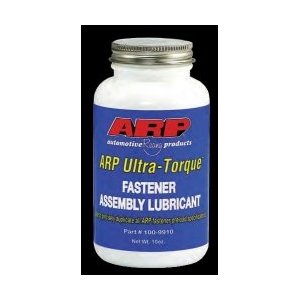Studs, strength and why you should use them at times
The tensile strain on a bolt is much different from that of a stud.
a bolt is more likely to break because the entire length must turn to adjust tension. This creates the risk of shearing the head of the bolt off when increasing or releasing tension. In comparison, only the nut turns on a stud, significantly reducing the risk of breakage.
BOLTS ALSO INDUCE WEAR ON THREADS IN THE COMPONENT, STUDS ARE EASILY REPLACED AND CAUSE LESS WEAR, AND MORE EVEN CLAMP LOADS
ALWAYS, BEFORE INSTALLING STUDS FIRST, READ UNDERSTAND AND FOLLOW THE MANUFACTURERS INSTRUCTIONS
RELATED INFO
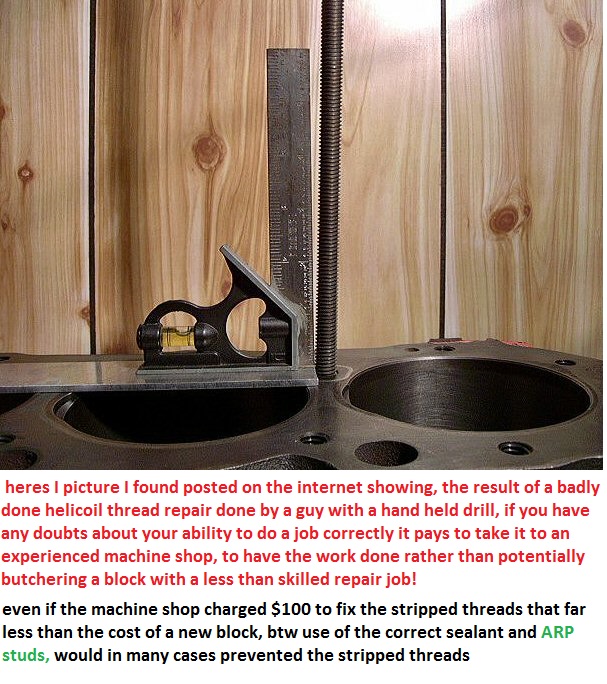
(1) a correctly installed stud tends to be both stronger and far less likely to strip threads
STUDS HAVE THE ENTIRE SURFACE OF THE THREADS BEAR STRESS LOADS, UNLIKE BOLTS, WHERE THE LOADS VARY AS THE THREADS ROTATE
(2) studs tend to spread the thread stress load over a greater surface area
(3) studs tend to allow greater clamping force and more even application of that clamping force
(4) studs tend to have a NC thread in the block and a NF thread thats used with a nut to apply the clamping loads thus lower wear on the block threads
(5) studs should be installed to a minimum of twice their diameter into the block and have the threads coated with anti seize past
(6) never bottom out a stud, most studs have a mid band, if the hole depth allows run the stud in until that band touches but not past that point.
(7) Use a tap to clean the threads before installing a stud
(8) Use a tread sealant if a stud enters a water jacket or oil passage
(9) Studs generally come with a matched nut and washer USE THE CORRECT MATCH PARTS
ALWAYS, BEFORE INSTALLING STUDS FIRST, READ UNDERSTAND AND FOLLOW THE MANUFACTURERS INSTRUCTIONS
(10)
Now I spent a good deal of time in college doing testing and research on this very thing as its REQUIRED in engineering classes, at first you may think its boring as all get out but after awhile you see the reasons its important to know.
Ill try to make this very short and simple
When you thread a bolt or stud into a material several factors determine the ability of the threads to hold, the thread design itself, the material the bolt or stud is made from and the material your threading them into should be obvious, but what many people don't understand is that the amount of thread engagement is critical as is the type of stress, if your pulling directly in line with the bolts center line the (TENSION) is going to be different and the stress is different than if the two parts bolted together are trying to slide past each other (SHEAR).
EXAMPLE BALANCER or damper bolt to re- install the damper on the crank youll run a high risk of stripping the threads simply because your applying a good deal of tension BEFORE the necessary amount of threads are engaged and the total surface area of those threads is far less than ideal during the first few turns under that tension/load.
A STUD is not used like a BOLT, , bolts generally have tension build as the bolts tighten against the threads ,a stud is screwed in finger tight into the matched hole to its designed depth and only then is tension applied to the material and threads, usually thru use of a NUT tightened on the extended threads, and those threads are frequently finer in pitch ,having a greater total surface area to the length of engagement.
Links you may need
http://www.arp-bolts.com/Catalog/Catalog.html
http://www.arp-bolts.com/Tech/Tech.html
http://www.arp-bolts.com/Tech/TechInstall.html
http://www.toolprice.com/category/handt ... WAodiBpnDg
http://www.sheldonbrown.com/tooltips/taps.html
http://www1.mscdirect.com/CGI/GSDRVSM?P ... AND%20TAPS
http://www.engineersedge.com/thread_str ... td-h28.htm
If you do manage to strip threads, Drill and thread too next larger diameter bolt in NF threads, HELICOIL REPAIR is a second option that must be used in some applications
http://stripe.colorado.edu/~genovaj/helicoil.htm
http://www.korit.com/tapndrill.htm
http://www.rfcafe.com/references/genera ... ll_sae.htm
http://www.newmantools.com/tapdrill.htm
http://www.simetric.co.uk/sidrill.htm
http://www.hotrodsandclassics.net/usefu ... 0sizes.htm
the correct way to repair a striped thread hole is to either use a helicoil the threaded hole with an insert or on aluminum heads ,its some times easier to have it welded and drilled and re- threaded /tapped use of studs, and valve cover hold down bolts that fit the studs, rather than bolts tends to prevent that from happening
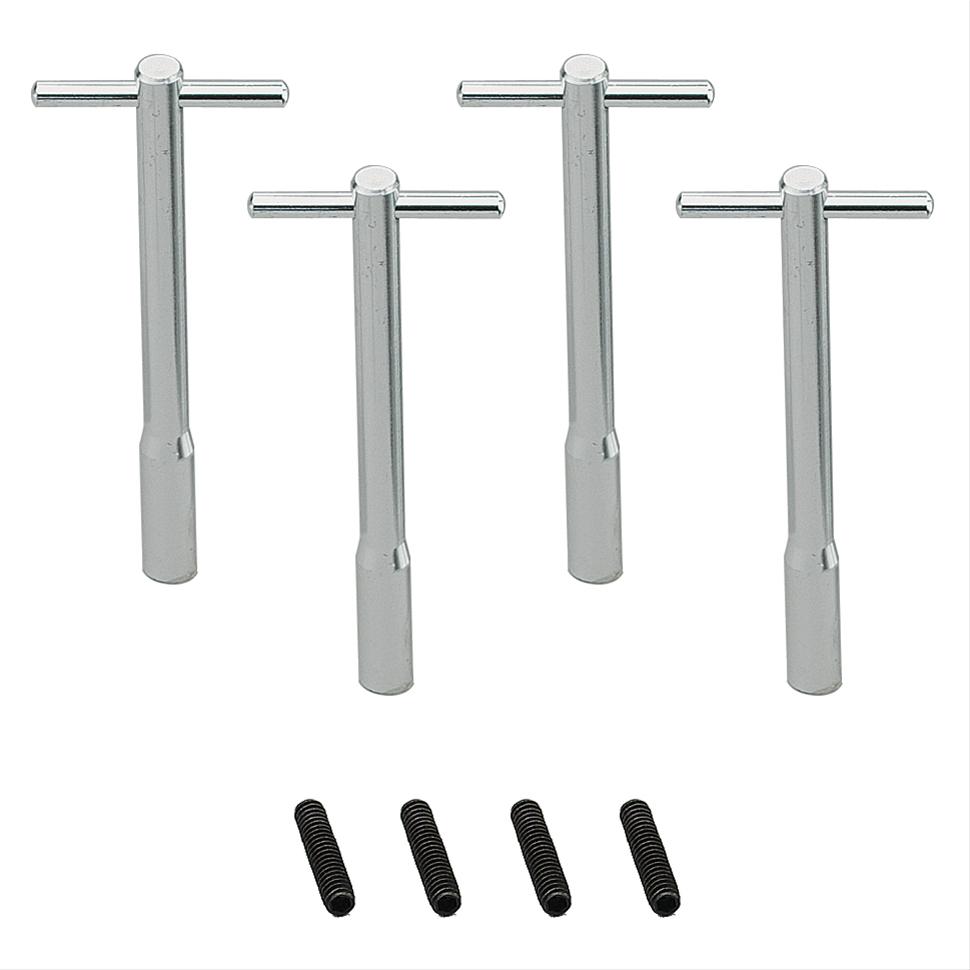
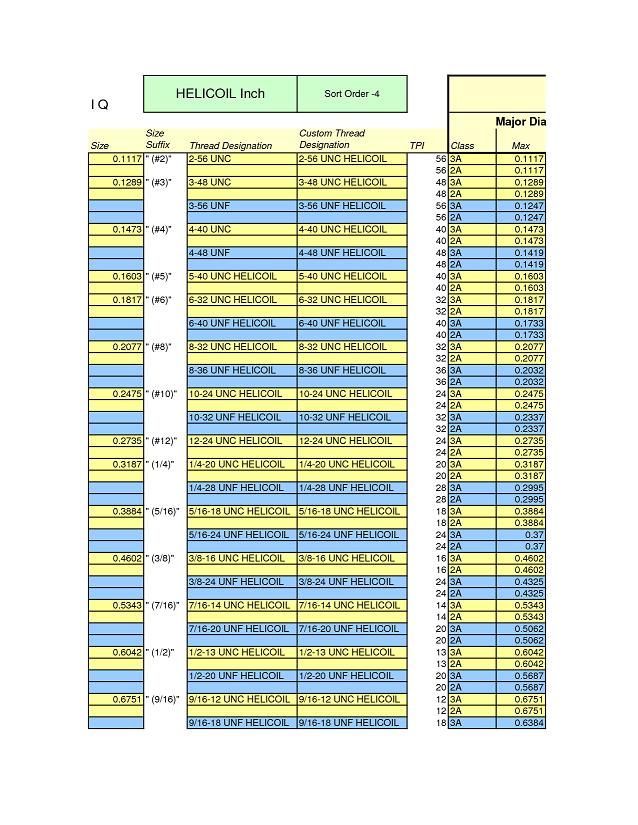
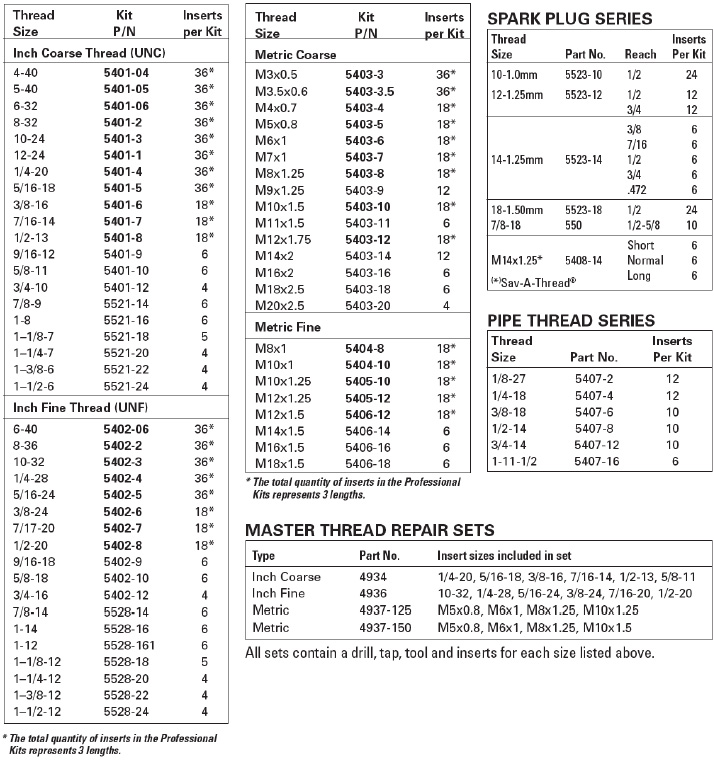
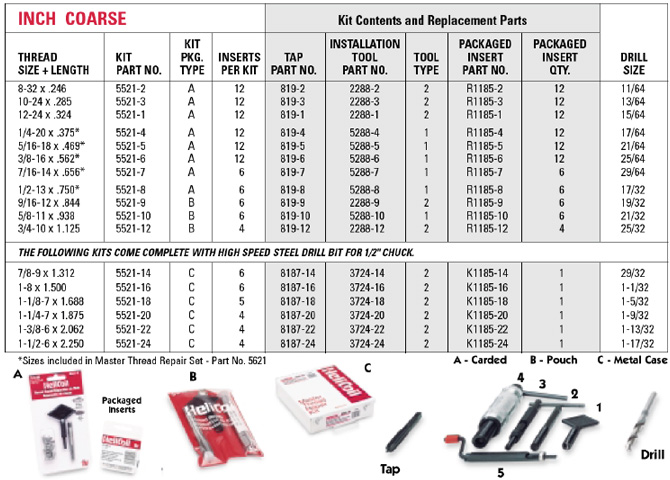
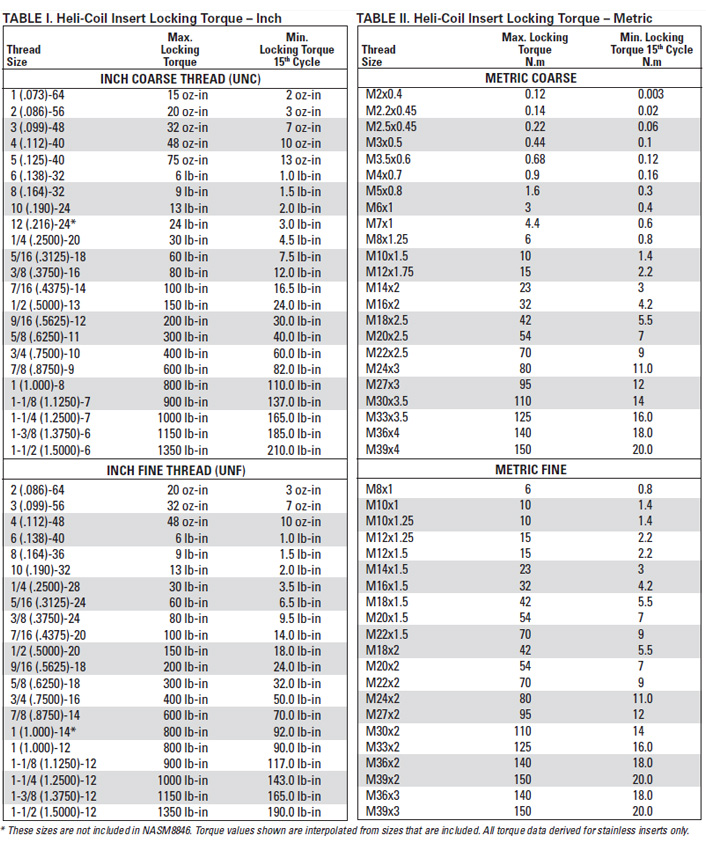
http://www.bing.com/videos/search?q=Hel ... 5C1376FCDB
The tensile strain on a bolt is much different from that of a stud.
a bolt is more likely to break because the entire length must turn to adjust tension. This creates the risk of shearing the head of the bolt off when increasing or releasing tension. In comparison, only the nut turns on a stud, significantly reducing the risk of breakage.
BOLTS ALSO INDUCE WEAR ON THREADS IN THE COMPONENT, STUDS ARE EASILY REPLACED AND CAUSE LESS WEAR, AND MORE EVEN CLAMP LOADS
ALWAYS, BEFORE INSTALLING STUDS FIRST, READ UNDERSTAND AND FOLLOW THE MANUFACTURERS INSTRUCTIONS
RELATED INFO

(1) a correctly installed stud tends to be both stronger and far less likely to strip threads
STUDS HAVE THE ENTIRE SURFACE OF THE THREADS BEAR STRESS LOADS, UNLIKE BOLTS, WHERE THE LOADS VARY AS THE THREADS ROTATE
(2) studs tend to spread the thread stress load over a greater surface area
(3) studs tend to allow greater clamping force and more even application of that clamping force
(4) studs tend to have a NC thread in the block and a NF thread thats used with a nut to apply the clamping loads thus lower wear on the block threads
(5) studs should be installed to a minimum of twice their diameter into the block and have the threads coated with anti seize past
(6) never bottom out a stud, most studs have a mid band, if the hole depth allows run the stud in until that band touches but not past that point.
(7) Use a tap to clean the threads before installing a stud
(8) Use a tread sealant if a stud enters a water jacket or oil passage
(9) Studs generally come with a matched nut and washer USE THE CORRECT MATCH PARTS
ALWAYS, BEFORE INSTALLING STUDS FIRST, READ UNDERSTAND AND FOLLOW THE MANUFACTURERS INSTRUCTIONS
(10)
Now I spent a good deal of time in college doing testing and research on this very thing as its REQUIRED in engineering classes, at first you may think its boring as all get out but after awhile you see the reasons its important to know.
Ill try to make this very short and simple
When you thread a bolt or stud into a material several factors determine the ability of the threads to hold, the thread design itself, the material the bolt or stud is made from and the material your threading them into should be obvious, but what many people don't understand is that the amount of thread engagement is critical as is the type of stress, if your pulling directly in line with the bolts center line the (TENSION) is going to be different and the stress is different than if the two parts bolted together are trying to slide past each other (SHEAR).
EXAMPLE BALANCER or damper bolt to re- install the damper on the crank youll run a high risk of stripping the threads simply because your applying a good deal of tension BEFORE the necessary amount of threads are engaged and the total surface area of those threads is far less than ideal during the first few turns under that tension/load.
A STUD is not used like a BOLT, , bolts generally have tension build as the bolts tighten against the threads ,a stud is screwed in finger tight into the matched hole to its designed depth and only then is tension applied to the material and threads, usually thru use of a NUT tightened on the extended threads, and those threads are frequently finer in pitch ,having a greater total surface area to the length of engagement.
Links you may need
http://www.arp-bolts.com/Catalog/Catalog.html
http://www.arp-bolts.com/Tech/Tech.html
http://www.arp-bolts.com/Tech/TechInstall.html
http://www.toolprice.com/category/handt ... WAodiBpnDg
http://www.sheldonbrown.com/tooltips/taps.html
http://www1.mscdirect.com/CGI/GSDRVSM?P ... AND%20TAPS
http://www.engineersedge.com/thread_str ... td-h28.htm
If you do manage to strip threads, Drill and thread too next larger diameter bolt in NF threads, HELICOIL REPAIR is a second option that must be used in some applications
http://stripe.colorado.edu/~genovaj/helicoil.htm
http://www.korit.com/tapndrill.htm
http://www.rfcafe.com/references/genera ... ll_sae.htm
http://www.newmantools.com/tapdrill.htm
http://www.simetric.co.uk/sidrill.htm
http://www.hotrodsandclassics.net/usefu ... 0sizes.htm
the correct way to repair a striped thread hole is to either use a helicoil the threaded hole with an insert or on aluminum heads ,its some times easier to have it welded and drilled and re- threaded /tapped use of studs, and valve cover hold down bolts that fit the studs, rather than bolts tends to prevent that from happening





http://www.bing.com/videos/search?q=Hel ... 5C1376FCDB
Last edited by a moderator:

